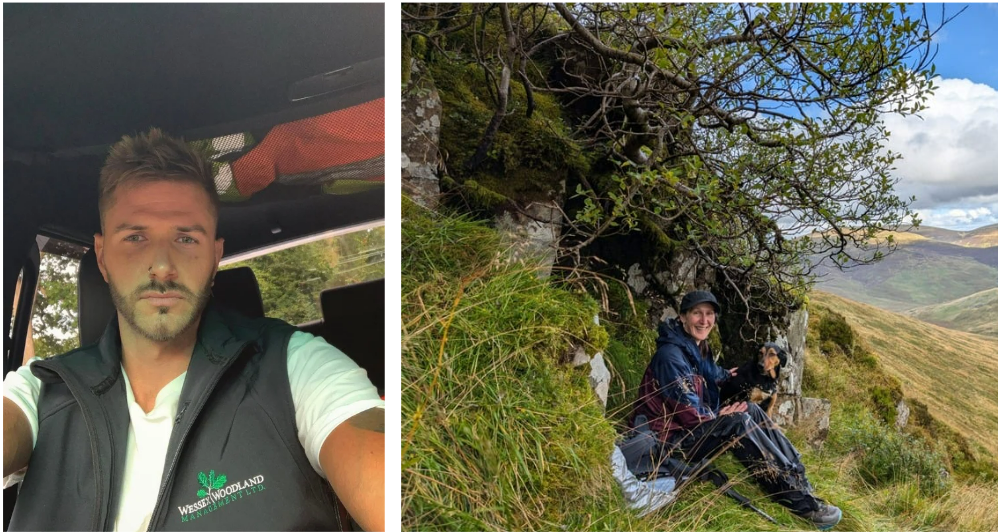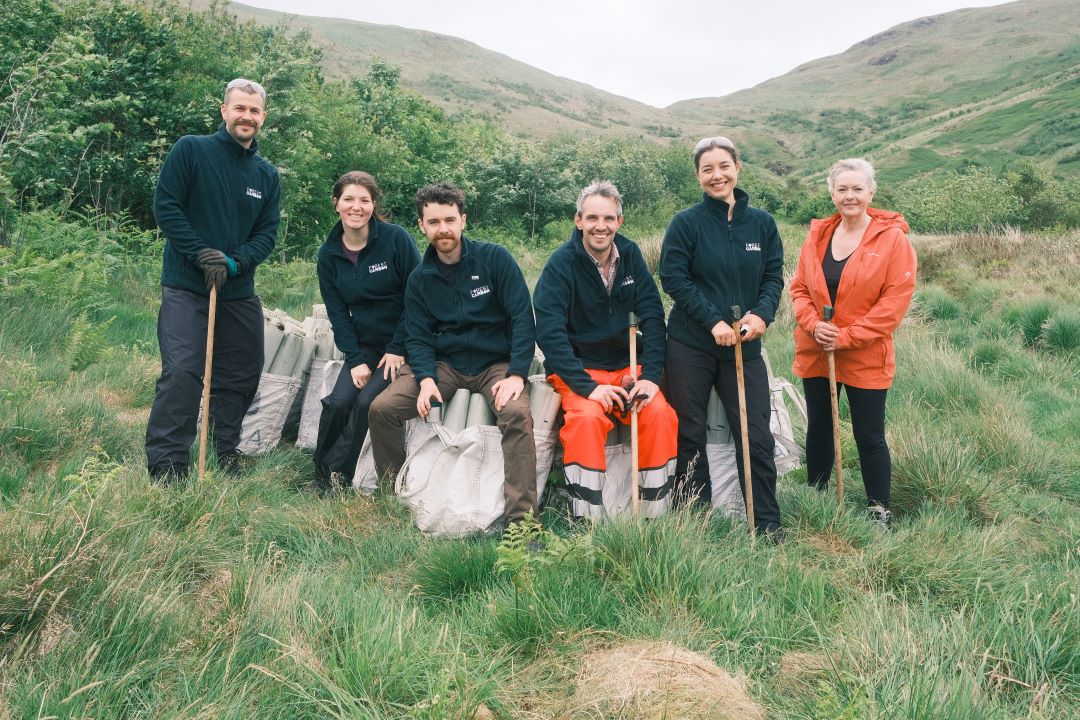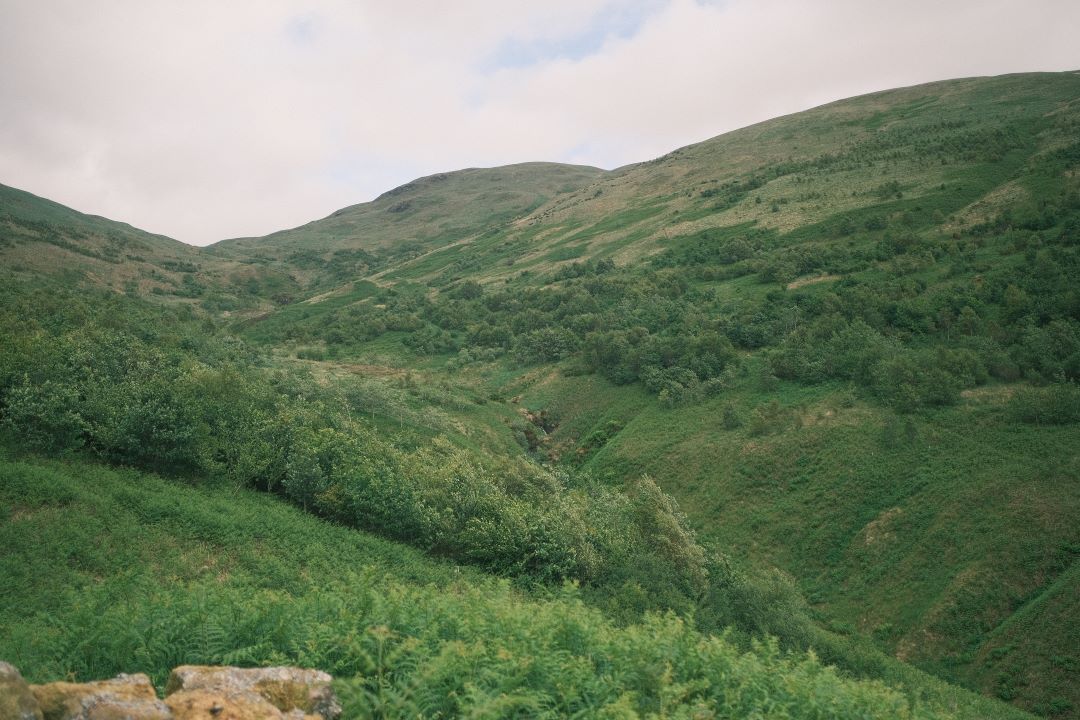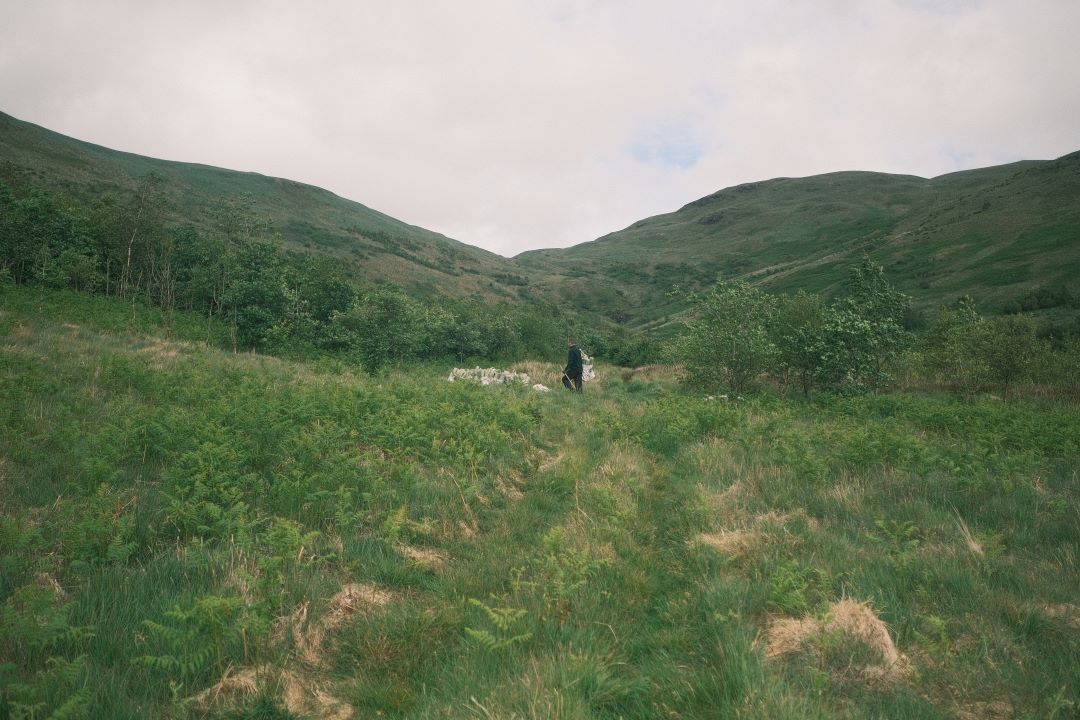In nature and carbon markets, ‘permanence’ refers to the long-term durability of environmental benefits generated by a project or intervention—such as carbon sequestration, biodiversity conservation, or ecosystem restoration. It is a fundamental principle underpinning project integrity. With nature particularly vulnerable to risks of reversal, understanding the mitigation and adaptive measures these projects take is a key consideration for businesses looking to protect their investment in nature-based solutions and deliver real, lasting impact.
At Forest Carbon, we work closely with a network of foresters across the UK to deliver high-integrity woodland creation and peatland restoration projects. But long-term success relies on more than good intentions. It requires robust planning, adaptive land management, and sustained support - including financing, governance, and increasingly, project insurance - to manage risks and safeguard outcomes.
To better understand how project planning and management influences woodland projects on the ground, we’ve been speaking with foresters in our network to hear their perspectives - from design, planting, and ongoing management.
Through these conversations, we hope to share insights and highlight both the shared considerations and regional differences in how woodland planning and management are evolving to ensure permanence, build resilience, and futureproof nature-based solutions in an increasingly unpredictable climate.
For this blog, we spoke with Charlie Hunt, Forester at Wessex Woodland Management Ltd, and Nicola Hunt, Head of Land Management at Borders Forest Trust (BFT).
We’ve had the pleasure of working with Charlie and the Wessex team on several woodland projects, and with Nicola and the Borders Forest Trust team on both woodland and peatland projects. We’ve also enjoyed heading to Borders Forest Trust’s Corehead Woodland for volunteer days, helping remove tree guards.
Wessex Woodland Management, founded in 1987, brings decades of expertise in guiding and supporting woodland management across England. Meanwhile, Borders Forest Trust, established in 1996, is dedicated to restoring native woodland habitats in Southern Scotland - a region with the lowest percentage of native woodland in mainland Scotland. The charity aims to demonstrate large-scale ecological restoration in action and to inspire landowners, statutory bodies, local communities, and policy makers to embrace this alternative model for land use and conservation.
Introducing the Foresters and Their Work

Charlie Hunt Nicola Hunt
Can you tell us a bit about your background, where you work, and the types of woodland projects you're typically involved in?
Charlie: I studied Forestry at Bangor University to obtain my degree, following this I gained experience working in the industry in New Zealand and Scotland before starting full time for Wessex Woodland Management in 2015. At Wessex Woodland Management, I'm involved with a vast range of projects from all the different aspects of forestry from designing and woodland creation right through to harvesting operations and timber marketing. Timber marketing refers to helping landowners bring their wood products to market in a sustainable way, ensuring both economic return and woodland health.
Nic: I studied Ecological Science at Edinburgh University then worked in a range of environmental jobs before joining Borders Forest Trust 25 years ago where I now undertake the role of Head of Land Management. In my time at BFT I have developed and managed the creation and establishment of over 900ha of new native woodland and montane scrub on BFT and privately owned land.
How long have you been working in woodland creation or management, and how have you seen the sector evolve over that time?
Charlie: I started in woodland creation in 2015 when the Countryside Stewardship Grant was in operation; applications were sparse and mostly driven by planting to improve pheasant shooting on estates. Since the introduction of the English Woodland Creation Offer (EWCO) there has been a lot more interest in tree planting, thus many more applications, but also different attitudes and objectives for tree planting.
For context, EWCO offers higher grants and broader objectives than the older scheme, encouraging tree planting not just for sporting estates but also for biodiversity, carbon capture, and wider land use benefits.
Nic: I have been involved in woodland creation for over 20 years and in this time I have seen an increase in native woodland establishment as well and significant increases in commercial conifer in the south of Scotland.
When I started working in the native woodland sector, most native planting schemes were fairly small. As the benefits of native planting have become more apparent over the years, there has been a significant increase in native woodland planting in South Scotland but more so in the North. In the South of Scotland, an area considered prime for sitka spruce growing, it is important to have a balance with native woodland to avoid total dominance of monoculture.
A significant driver for the type of woodland planted has been forestry grant rates with higher levels of native woodland planting when the grants for native planting have been generous. However current commercial grant rates and timber market has led to significant expansion of conifer planting in the South of Scotland.
Understanding Permanence and Long-Term Stewardship
As Charlie and Nic’s experience shows, woodland creation has evolved rapidly - driven by new funding schemes, changing public priorities, and growing awareness of climate impacts. But one question remains constant: how can woodlands endure for the long term?
From your perspective, what does ‘permanence’ mean in the context of woodland creation projects?
Charlie: Permanence is about changing the use of the land forever by planting trees - creating a long-term impact. In practice, this usually means long-term commitments from landowners and monitoring to ensure projects endure.
Nic: Permanence is the creation of woodland to exist in perpetuity and therefore have long term environmental benefits.
Permanence is a fundamental principle for Voluntary Carbon Market (VCM) projects. At Forest Carbon, we consider it crucial for every nature-based project we support. Ensuring woodlands endure requires careful planning, ongoing monitoring, and adaptive management - made possible by having expert teams on the ground.
What role do ongoing funding streams - like voluntary carbon market support - play in enabling proper long-term management of woodland projects?
Charlie: They ensure the woodland gets established in its most vulnerable stage and are vital to the success of tree planting - ensuring successful establishment and long-term survival. The voluntary carbon market provides opportunity for future income from these woodland creation projects - this can help cover management costs, giving landowners financial confidence to look after woodlands beyond the initial planting stage.
Nic: In native woodland creation projects, forestry grants are generally the main source of funding works however in our experience this funding only covers 60-70% of initial planting costs and does not cover the full maintenance costs nor for an adequate period of time. They are also intended to include an element of funding for deer management, irrespective of if deer fencing is used, but the grant does not stretch this far and deer management is often required for native schemes well beyond 10 years. In order to make these planting schemes economically viable in the planting and establishment phase, additional funding sources are needed and carbon plays a significant role in this.




Images: Wessex Woodland Management Ltd
Planning for Climate Change and Emerging Risks
While permanence focuses on keeping woodlands viable for generations, new threats - from wildfire to drought - mean foresters are rethinking how projects are designed and managed today. Both Charlie and Nicola shared how climate change is reshaping species selection, site design, and management priorities on the ground
How are the growing risks from wildfire and extreme weather changing the way you plan and manage woodland creation projects?
Charlie: We’re increasing species diversity and avoiding monoculture or individual species percentages over 50%, with a preference to plant mixed broadleaves (MBL) over resinous conifer. It’s also important to build in long term woodland management such as regular thinning and pruning to keep fuel levels - the amount of burnable material like brash, deadwood, or dense undergrowth - low at sites.
Nic: Diversification is considered key to building resilience of native woodlands to combat climate change and this is achieved through maximising the range of species included in the planting plans. By introducing a greater range of appropriate species, the woodland will have a greater capacity which can adapt to whatever changes occur with our climate be it wetter, drier, colder or warmer. In our most recent scheme we have included some species from the lowland equivalent woodland type rather than stick to purely the upland species.
Fire is a significant risk however the diverse structure of native woodland canopy will create a damper environment with a greater resistance to fire. This could slow rapid spread and hopefully improve the ability to tackle and extinguish fires. In our native schemes, the planting design incorporates open ground around areas unsuited to planting such as bogs and flushes which can act as natural fires breaks if fire passes through woodland.
Have these risks influenced how you approach species mix selection for woodland creation sites? Are you making use of different planting techniques or opting for species that are more resilient to strong winds and climate extremes?
Charlie: Species selection is based on what is growing well in the area with support from ESC (Ecological Site Classification: a Forestry Commission tool that helps match tree species to local conditions and future climate scenarios). In terms of planting/establishment this year, on a number of our larger woodland creation sites, we will be trialling mulch mats with the addition of mulch in order to retain ground moisture. Mulch mats help retain moisture during drier summers, improving establishment rates for young trees.
Nic: Diverse native woodlands should be more resilient and adaptable to changing climatic conditions. The selection of species is made using ESC to suit the current conditions and where appropriate we are looking beyond the purely native species to consider inclusion of species that are native to lowland, southern equivalents of woodland types and including them. This not only diversifies the species composition but can also provide refuges for species using these trees and shrubs that may be affected by climate change and have to change their range.
What kind of practical measures do you build into project design to reduce fire risk - such as steps to prevent arson during dry periods?
Charlie: Project security and woodland design are important to reduce these risks. This can include things such as either deer fences or locked gates as well as managed open ground and inclusion of fire breaks within woodland design. Fire breaks are planned open areas within a woodland - such as grass rides, tracks, or clear strips - that help slow the spread of fire and provide access for firefighting if needed.
Nic: Our sites are open to the public so raising awareness of the risk is important and we have signs at entrances to the sites explaining why fires are not permitted during dry spells. 
Image: Wessex Woodland Management Ltd
Earlier this year, the Forest Carbon team spent a day volunteering with Borders Forest Trust at Corehead, helping with tree guard removal. It was a brilliant day out - we couldn’t recommend it more!
If you’re interested in visiting any of the Borders Forest Trust sites, check out their website. You can also volunteer with them - it’s a fantastic way to do some good and spend time in nature!

Forest Carbon tree guard removal day at BFT's Corehead site
Are there particular species you’ve found to be benefiting - or struggling - under shifting climate conditions? Are you avoiding certain species to help limit the spread of pests or disease?
Charlie: Hornbeam seems to be benefiting from a shifting climate condition, therefore we have increased our planting percentages of Hornbeam. Conversely, we’re avoiding high percentages of Sweet Chestnut and Norway Spruce due to Ips typographus (spruce bark beetle), which poses a major risk to spruce across Europe.
Nic: No obvious species seems affected by climate change. We do plant juniper even though there are recommendations to avoid planting it due to risk of phythora austrocedre. However our sites are lacking in this species and unless we try to plant it and create more local populations it may become locally extinct over time. We follow advice to plant trees grown from seed rather than cuttings to reduce the risk of introducing infected plants to our sites.
More broadly, what does building resilience into woodland projects actually look like in practice?
Charlie: Put simply, a larger variety of site specific trees.
Nic: DITTO!
How can woodland managers futureproof their projects for a climate 10–30 years from now?
Charlie: Use tools available, such as consulting with ESC, design a new woodland with a diverse mix of trees.
In the context of southern or lowland England, what specific risks (e.g. drought, pests, urban pressure) are most concerning?
Charlie: IPS affecting Norway Spruce and Oak Processionary Moth which seems to be spreading rapidly. Urban pressure is a worry for established woodlands as active management of these woodlands tends to have negative press, even though active management is essential for woodland health and resilience.
Have you seen a shift in landowner interest or awareness around extreme weather and project resilience?
Charlie: A lot of landowners are fully aware of Ash dieback and how damaging it can be to woodlands if the ash is planted in large quantities. Therefore they understand the need for more species/resilience.
Nic: We support local land owners to develop new native woodland planting and there is an increased interest in planting trees to create shelter for livestock in increasingly warm summers. This has become a new driver for planting.


Image: BFT's Corehead site
We’d like to thank Charlie and Nicola for sharing their valuable insights and experiences. Their perspectives highlight that successful woodland creation isn’t just about planting trees - it’s about careful planning, adaptive management, and building resilience for the long term.
If you’re working on a woodland or peatland project and would like support, please contact us!
/public/692/dd7/e0c/692dd7e0ca905474952387.jpg)
/public/68f/f39/36d/68ff3936defff352354004.jpg)
/public/68d/a53/023/68da530233e97825782884.jpg)